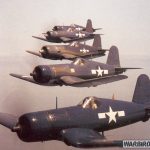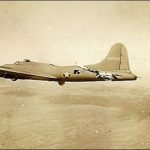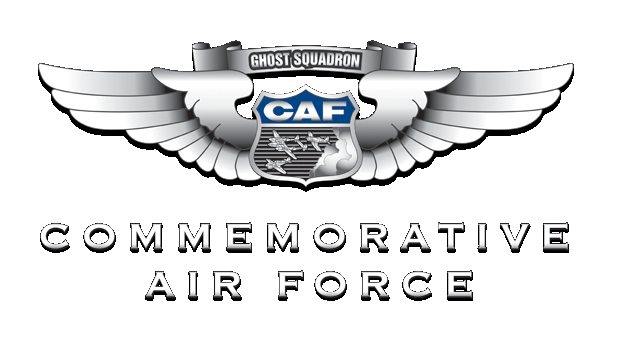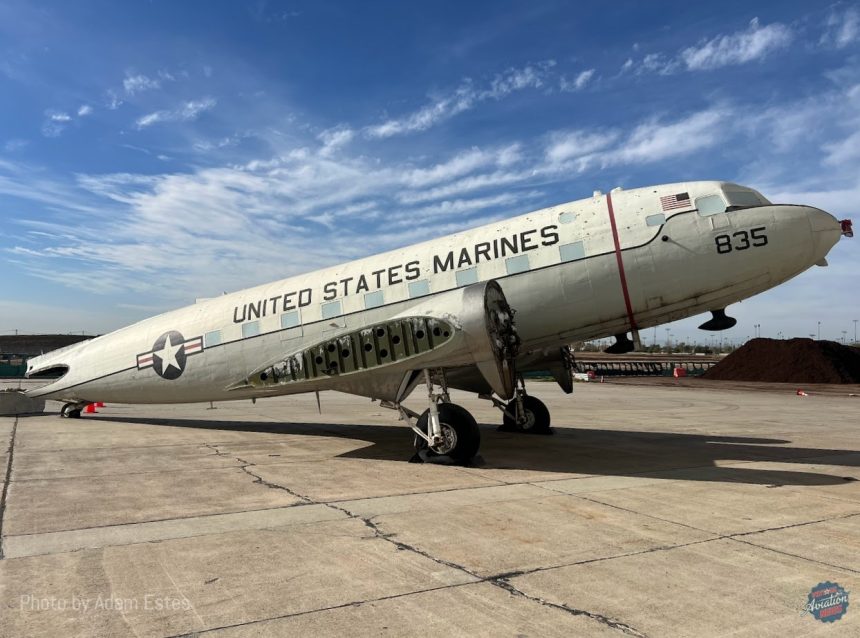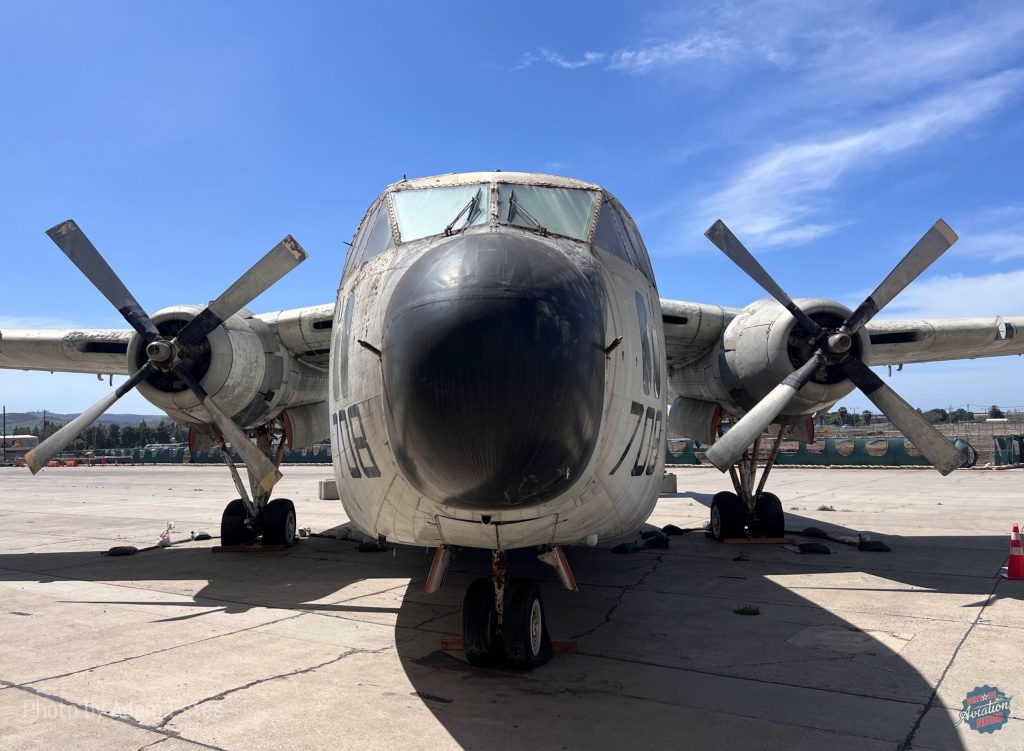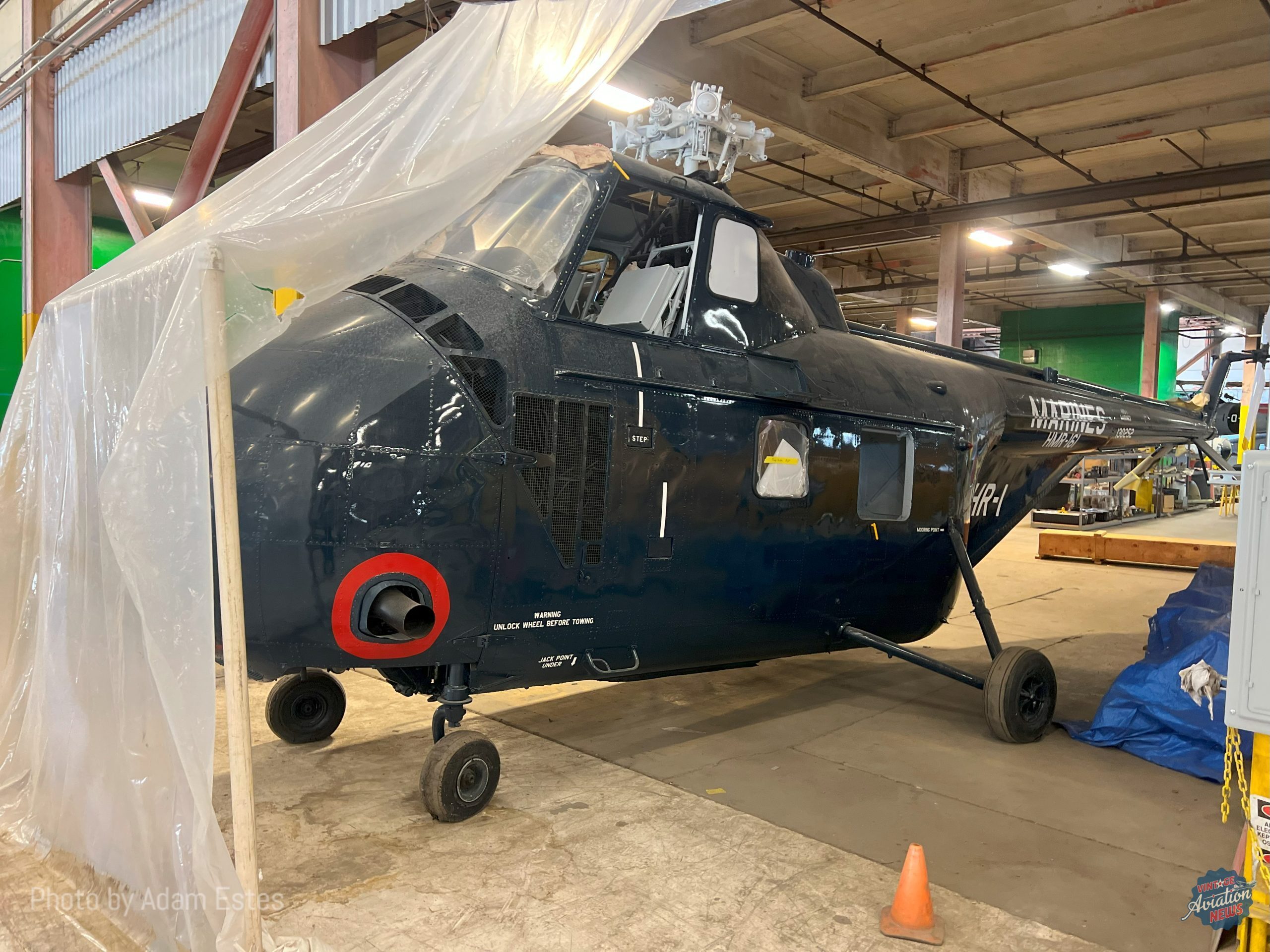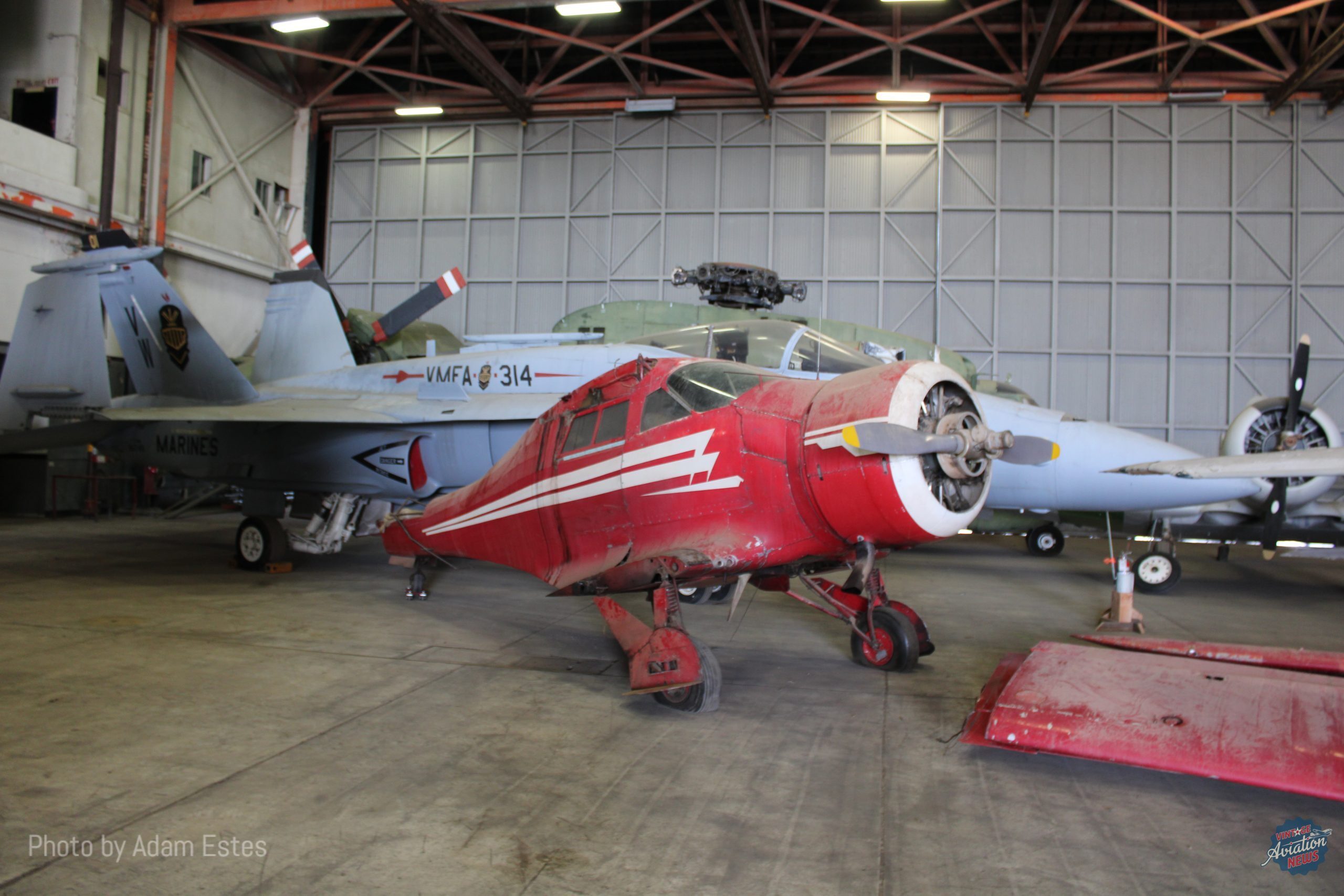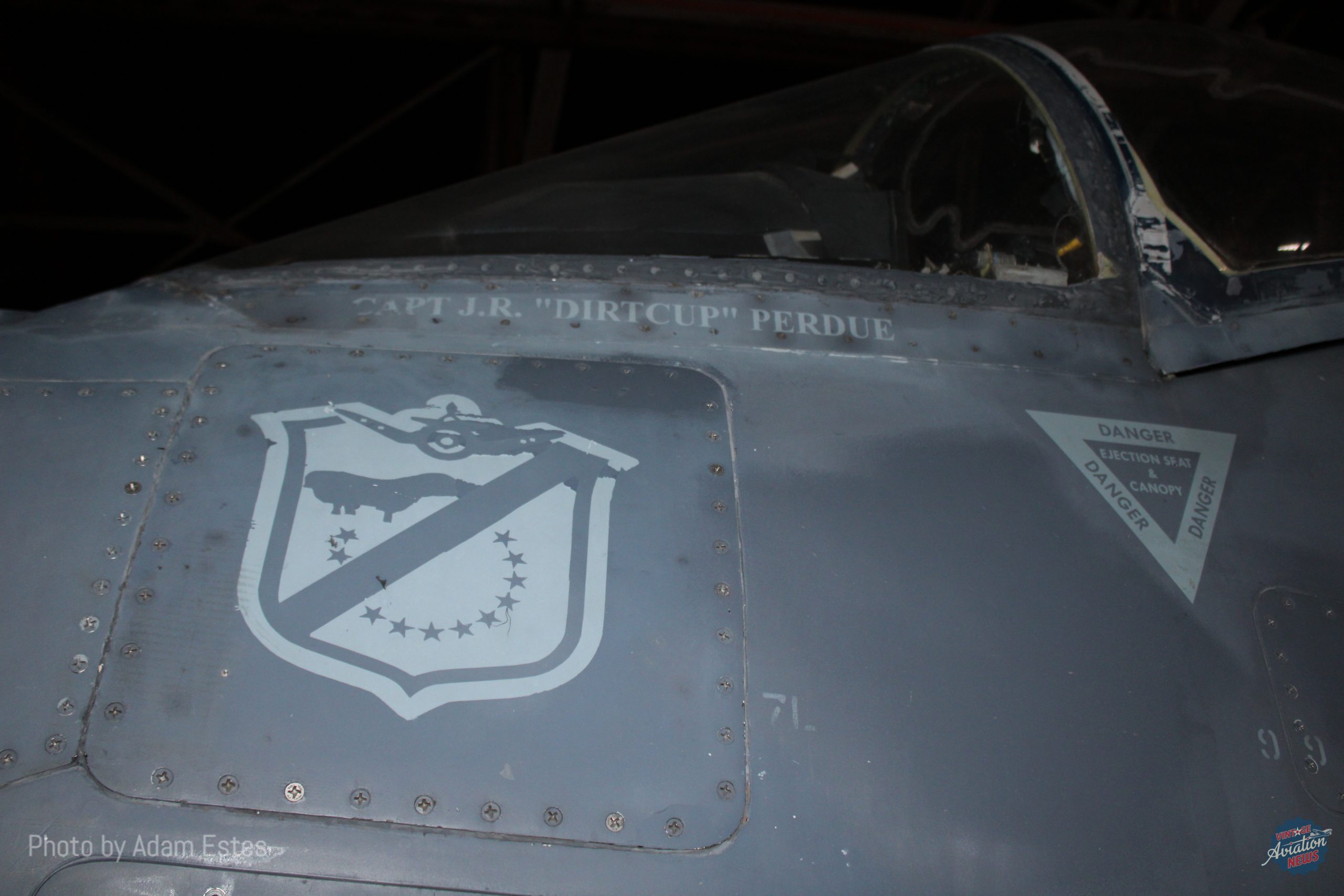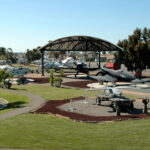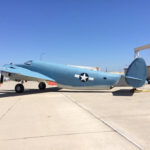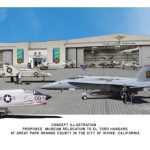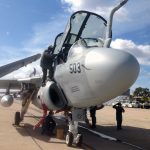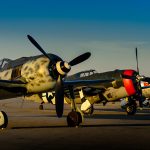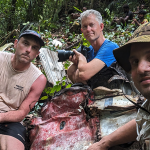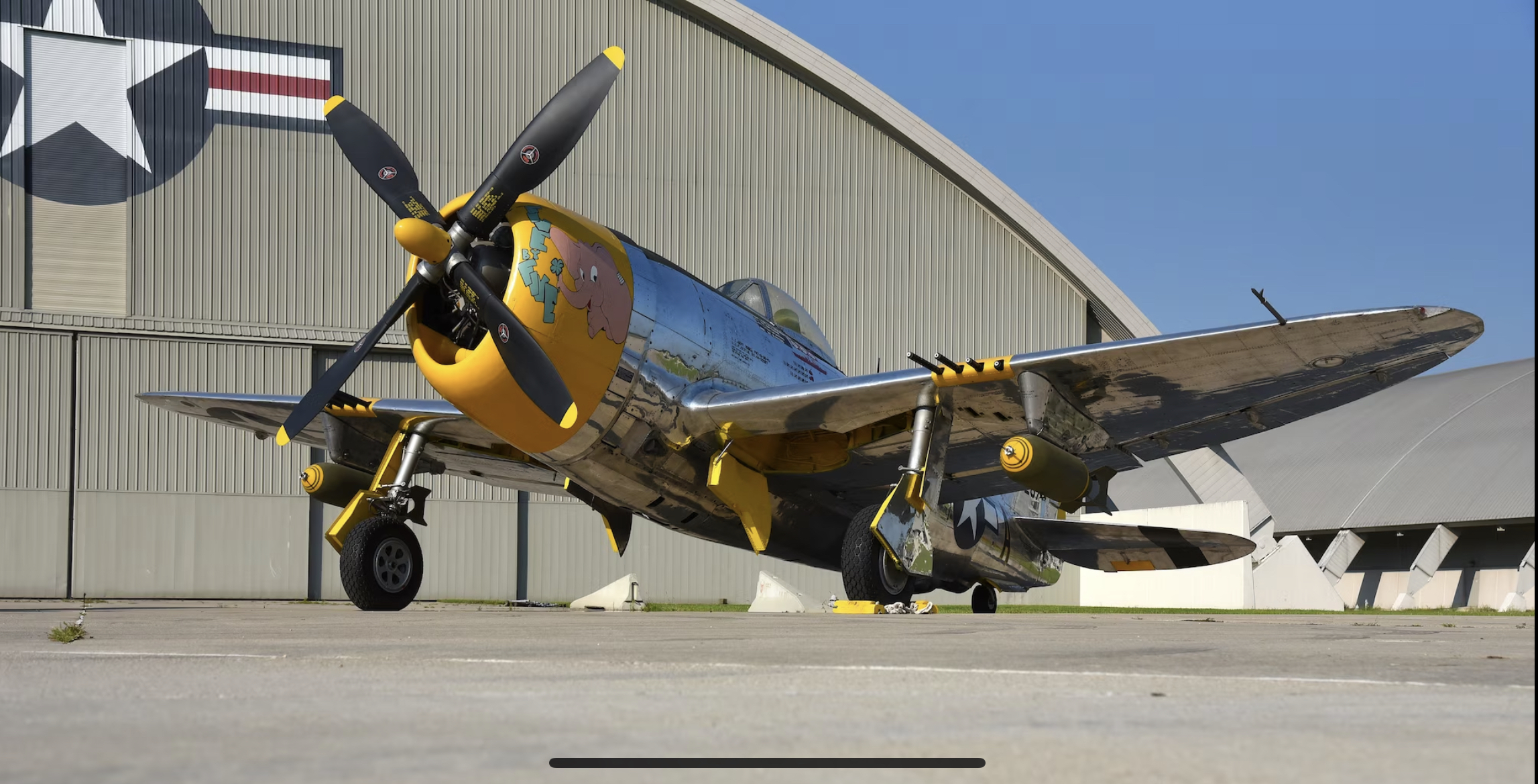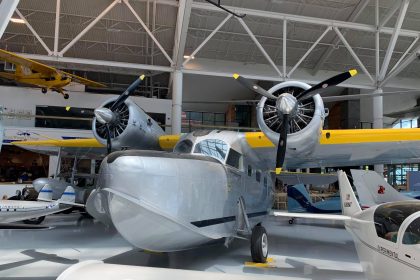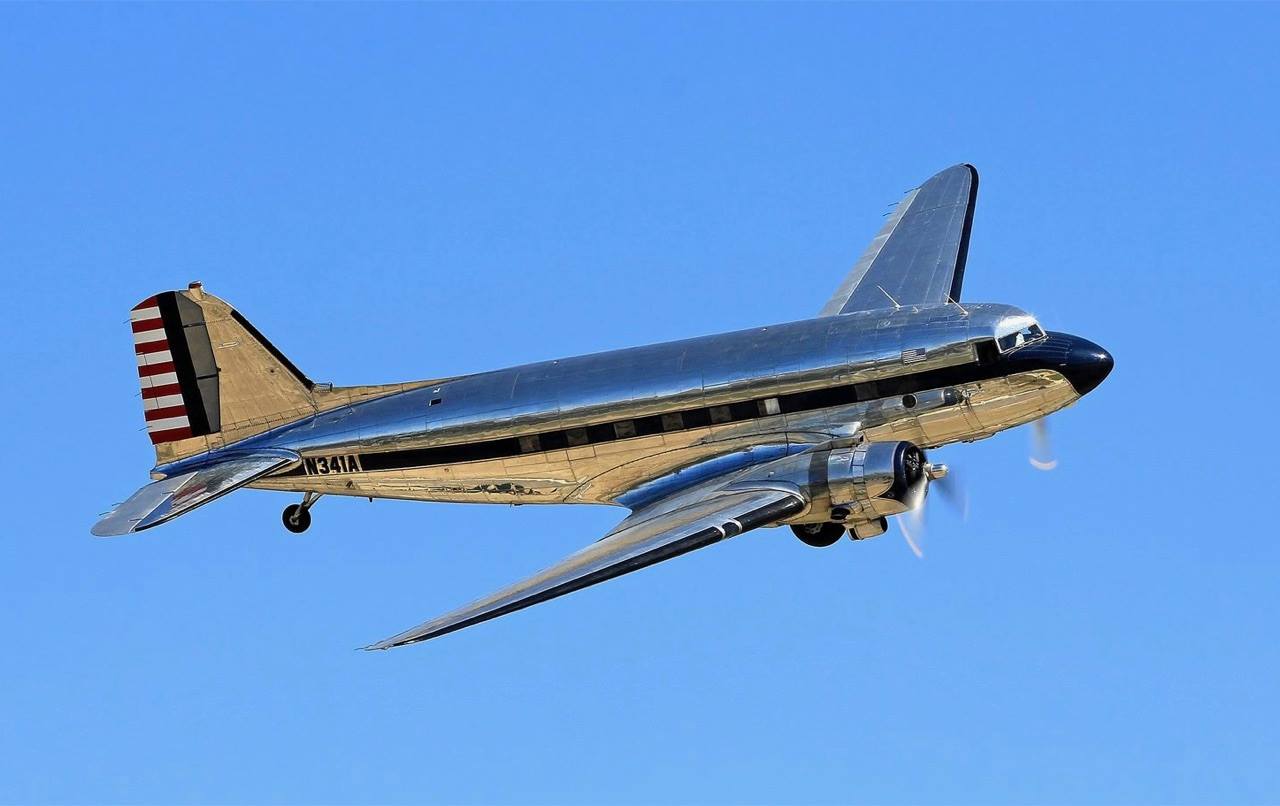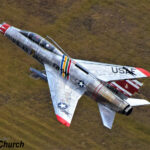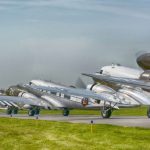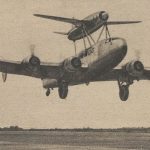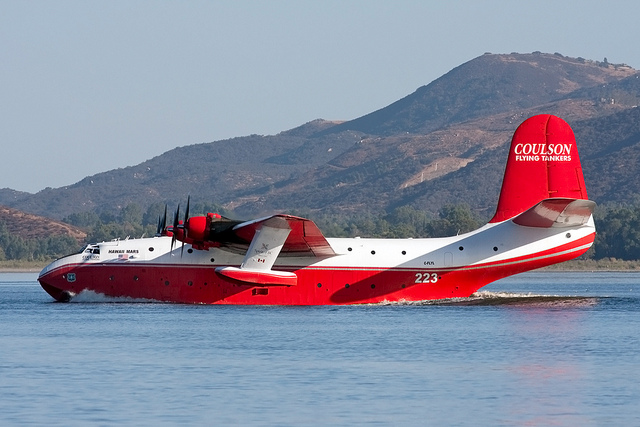At the end of 2023, we discussed the Flying Leatherneck Aviation Museum‘s move from Marine Corps Air Station (MCAS) Miramar to the Orange County Great Park, situated on the former site of MCAS El Toro in Irvine, CA (See this article HERE). Since that article, the museum has moved all of its aircraft from Miramar to Irvine and is now making a steady headway towards its grand opening, currently set for the spring of 2027.
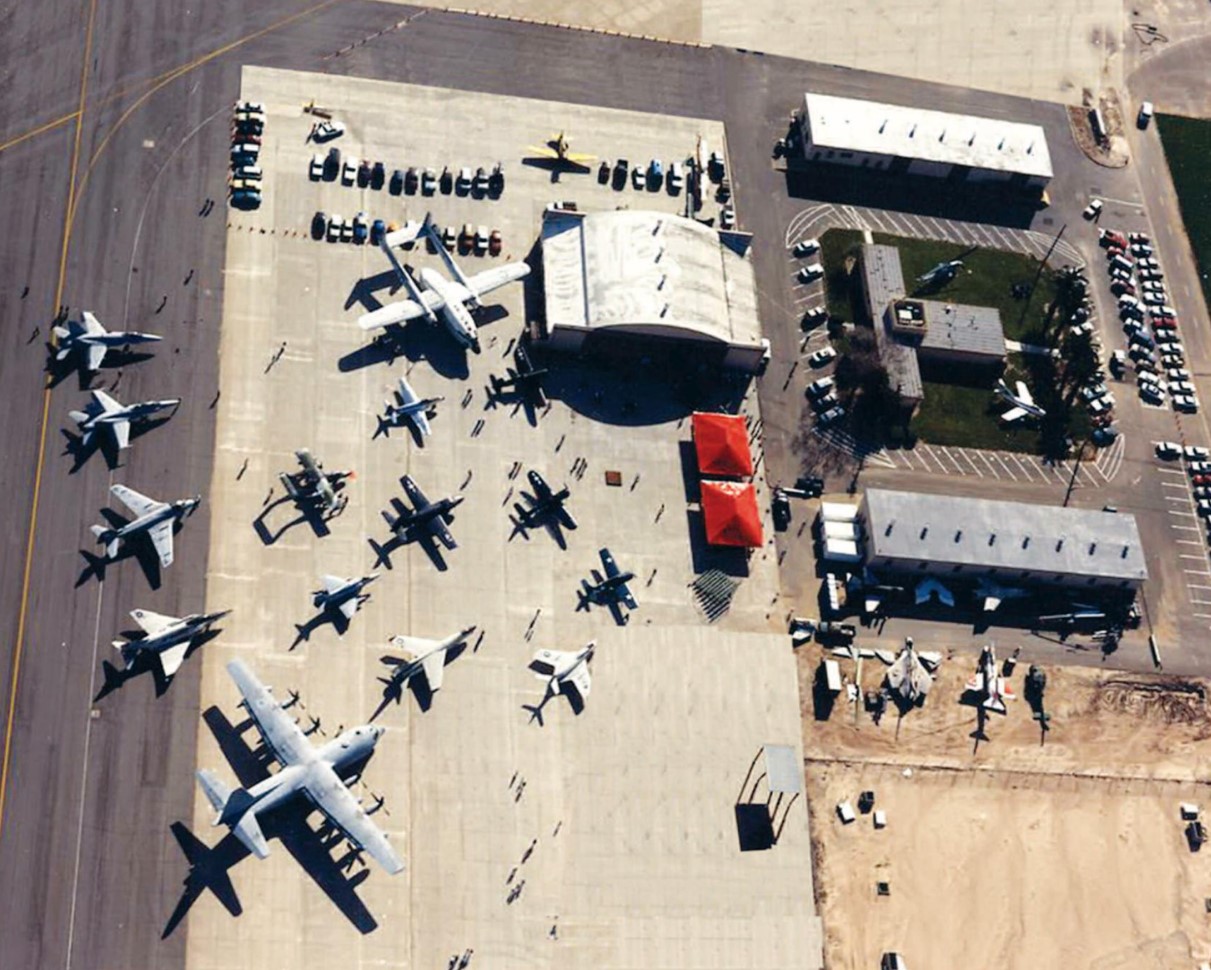
As mentioned in our previous article, the Flying Leatherneck Aviation Museum (FLAM) was established in 1989 at MCAS El Toro, a Marine Corps Air Station that was constructed during WWII and had, at that point, been in continuous operation since 1942. Upon the museum’s founding, it became the sole aviation museum dedicated to the aviation history of the United States Marine Corps, but following the collapse of the Soviet Union in 1991, the Defense Base Closure and Realignment Commission recommended the closure of MCAS El Toro, and nearby MCAS Tustin, which had been established during World War II as Naval Air Station Santa Ana. Despite the museum growing its collection of aircraft and historic artifacts, the museum was moved to MCAS Miramar in 1999 as El Toro closed for good that same year. Over the next 21 years, the Flying Leatherneck Aviation Museum remained in operation on the north side of MCAS Miramar on Miramar Road before being forced to close during the COVID-19 pandemic in 2020. Before the museum could reopen, budget cuts forced the command at MCAS Miramar to withdraw their support for the museum.
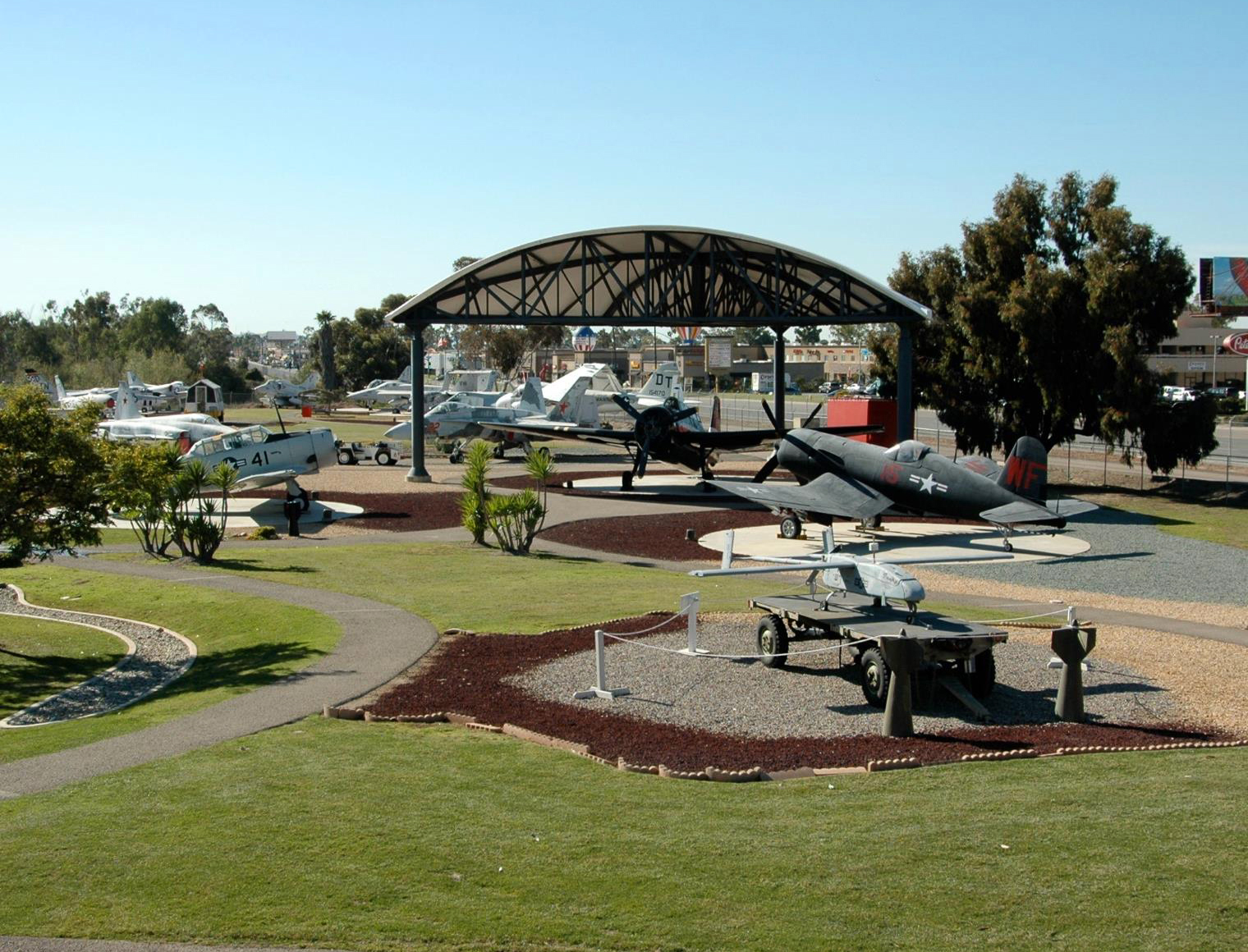
While the museum was closed, and as several of its aircraft that were on loan from the National Naval Aviation Museum in Pensacola, Florida were shipped to other museums across the country, the Flying Leatherneck Historical Foundation was able to get a Memorandum of Understanding signed in May of 2022 between the FLHF and the City of Irvine to return the museum to Irvine as part of that city’s efforts to convert the former El Toro base into the Orange County Great Park, with new residential apartment complexes and public park space on the site of MCS El Toro. As part of this development, the Great Park is set to include the Cultural Terrace, a site for museums, performing arts centers, and community centers, including the new home for the Flying Leatherneck Aviation Museum.
Throughout 2024, the collections of the Flying Leatherneck Aviation Museum were transported up Interstate 5 from Miramar, just north of San Diego, to Irvine, with the aircraft being moved by Worldwide Aircraft Recovery of Bellevue, Nebraska, which have transported dozens of military aircraft across the country since 1987. The first three aircraft to arrive at the museum’s storage and restoration hangar, Hangar 297 (which was used during El Toro’s active days as the home of Marine Aerial Refueling Transport Squadron 352 (VMGR-352)), were the museum’s McDonnell Douglas F/A-18A Hornet BuNo 161749, Beechcraft T-34 Mentor BuNo 140688, and Mikoyan-Gurevich MiG-15bis, PLAAF serial number 81072, which arrived on March 5, 2024, with fanfare from local Marine Corps veterans, city officials, and local press. In the coming months, more and more of the museum’s airplanes and helicopters were driven up the interstate to Irvine, from the CH-46D Sea Knight BuNo 154803 “Lady Ace 09” that evacuated U.S. Ambassador to South Vietnam Graham Martin from the US Embassy in Saigon to the museum’s Douglas C-117 and Fairchild R4Q (Marine designation of the C-119), that were displayed inside the base at Miramar.
With all of the aircraft now at Irvine, the job of refurbishing them before the opening of the museum has come down to Georgia-based restoration/conservation firm Ponsford Limited. Before the move from Miramar, the Flying Leatherneck Aviation Museum had their own restoration department, consisting of volunteers who worked in MCAS Miramar’s Delta Hangar 4228, working on aircraft such as the Lockheed TV-1 Shooting Star BuNo 33840 and Bell HTL-4 BuNo 142394 helicopter, but with the closure of the museum in 2021, the museum was reluctantly forced to dismiss these dedicated volunteers. Even before the museum began the move to Irvine, Ponsford was hired to refurbish as much of the aircraft inside Delta Hangar 4228 as possible before they were transported up to Irvine.

Since the museum moved its collection to Irvine, specialists from Ponsford are now refurbishing aircraft inside the south wing of Hangar 297, such as the museum’s F-4S Phantom II BuNo 157246, North American Rockwell OV-10D Bronco BuNo 155494, and the museum’s B-25J Mitchell 44-86727, which also served in the Royal Canadian Air Force as RCAF 5230 and will be restored to represent the land-based Navy/Marine variant of the B-25, the PBJ (Patrol Bomber North American (J being the Navy/Marine manufacturer’s code for North American). Ponsford has also completed the refurbishment of a few of the collection’s aircraft inside Hangar 297, such as the museum’s Piasecki HUP-2 Retriever (BuNo 128596) and Sikorsky HRS-3 (H-19) Chickasaw (BuNo 130252) helicopters.
Besides the airplanes that have been transported from the old museum at Miramar, the FLAM has welcomed some new aircraft as well. One of these has been a Beech Staggerwing with the N-number N28A, which was flown by Gordon “Rocky” Warren in aerial mapping flights for the US Geological Service and in a 1975 FAA training film on mountain flying, and it was Rocky’s son Mike who sold the aircraft to the museum. However, the aircraft had originally been built during WWII and was flown by the US Army Air Force as serial number 44-67752, British Royal Navy as FT498, and the US Navy as Bureau Number 32892 before it was stricken from the USN’s inventory on July 31, 1946, and becoming surplus for the civilian market.
Another arrival came from the Orange County Great Park itself, Naval Aircraft Factory N3N-3 BuNo 04425, N44879, which was donated to the City of Irvine in 2009, and displayed along with North American SNJ-5 Texan BuNo 43921 (formerly AT-6C 42-84402) at the former Hangar 244 near the Great Park’s Balloon Ride. In February 2025, the city donated the N3N-3 to the Flying Leathernecks Aviation Museum, but since the FLAM already brought their own SNJ-5 from Miramar, BuNo 90866, BuNo 43921 will remain at Hangar 244.
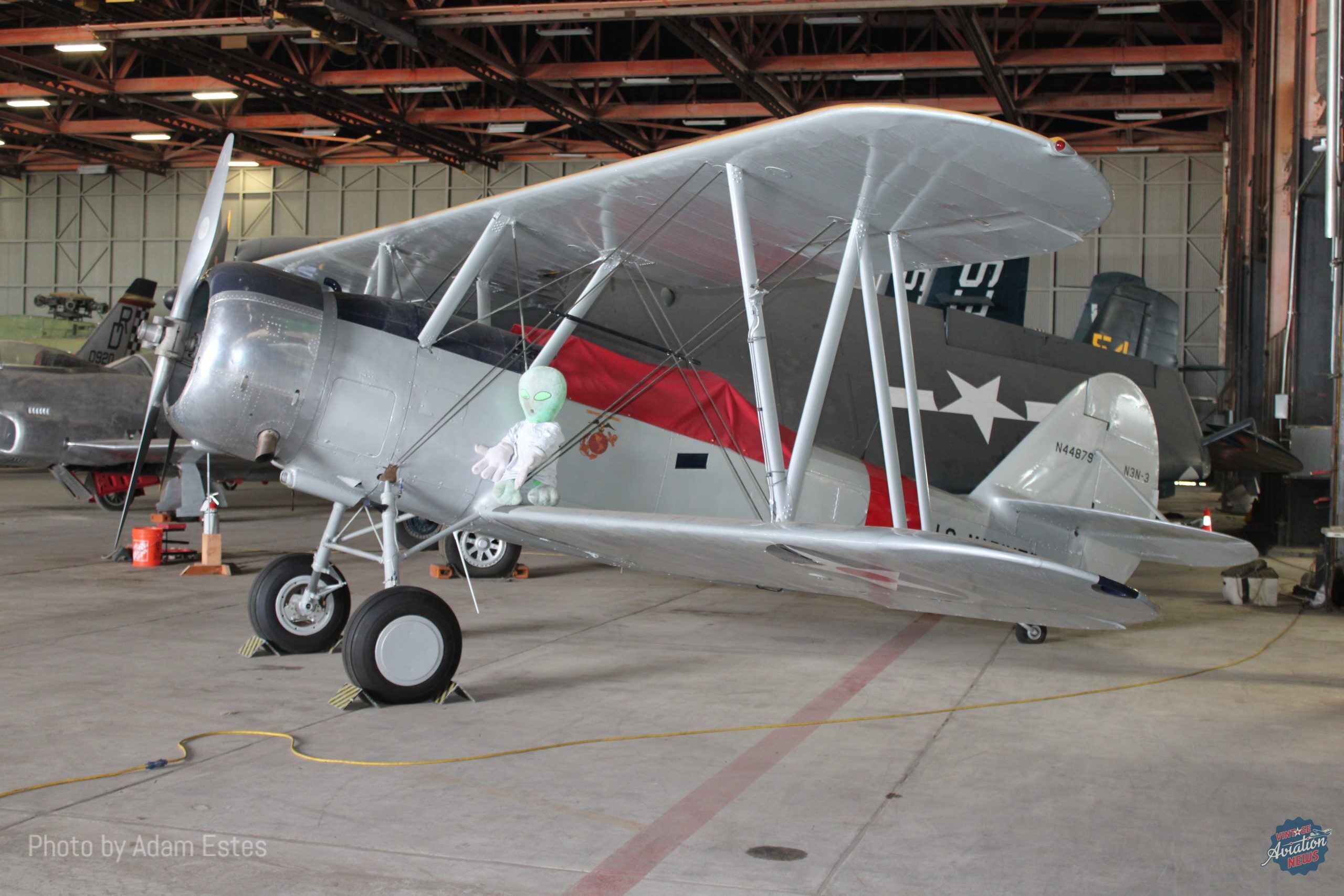
One exciting development at the FLAM for us at Vintage Aviation News is the Flying Leathernecks’ acquisition of a full-scale reproduction of a Vought O3U-3 Corsair observation aircraft typically launched from shipborne catapults as a floatplane. Last year, we covered the efforts of the Vought Heritage Foundation (VHF)’s efforts to build this, the first aircraft built by the Chance Vought company to be called Corsair, in Grand Prairie, Texas in this article HERE. Following the completion of the project that ran from 2008 to 2024, the VHF searched the country for a prospective home for the fruit of their labors and found that in the Flying Leathernecks Aviation Museum. When the museum opens with the O3U on display, the VHF will organize a trip for their volunteers to see the aircraft they built on display.

Finally, the most recent arrival at the time of publication has been a McDonnell Douglas AV-8B Harrier II, Bureau Number 165572. The Flying Leathernecks previously had an earlier Harrier, Hawker Siddeley AV-8C BuNo 712065, on display both at the original museum at El Toro and the museum at Miramar but when the latter facility was forced to close, 712065 was transported to the Fort Worth Aviation Museum in Texas where it is currently on display. The new Harrier II at the Flying Leatherneck Aviation Museum is AV-8B BuNo 165572, which was originally manufactured by McDonnell Douglas in St. Louis, Missouri as BuNo 162958 before being rebuilt as 165572. After deployments to Iraq and Afghanistan, the aircraft’s last active-duty assignment was at MCAS Yuma, Arizona with Marine Fighter Attack Squadron 214 (VMFA-214), better known as the Black Sheep Squadron. The Harrier arrived at Irvine on March 14, and will be reassembled for display in the new museum.
In speaking to the author about the history of the museum’s new Harrier, Lieutenant Colonel (ret.) Grant Williams, the museum’s Vice President of Operations, had stated “Our AV-8B has a significant past as it was one of the surviving Harriers assigned to VMA-211 at Camp Bastion, Afghanistan. Six of the eight squadron aircraft were destroyed by a Taliban attack [in September 2012], and the Commanding Officer was killed in the gun battle. It also has one of the highest accumulated combat hours in the inventory. We have not decided if we will keep the Harrier designated as VMA-311 or revert it back to VMA-211.”

The new museum will even provide space to display aircraft of WWI, as the FLAM has also acquired a Curtiss JN-4 “Jenny” trainer and will later construct a full-scale replica of a de Havilland DH-4. These two will represent the US Marine Corps Aviation’s involvement during the First World War, where the first Marine aviators learned to fly in the venerable trainers that later became famed for their use by postwar barnstormers, and the first Marines to fight in aerial combat flew the British-designed DH-4s with American-built Liberty L-12 engines, and later used them up to 1929, with some even being flown during the Marine-led occupation of Nicaragua during the 1920s.

In addition to the aircraft set to go on display, the museum has plans to build a new building dedicated to the museum’s operations, with room to display much of its collection indoors, a big step up from prior outdoor displays for the aircraft at El Toro during the 1990s and at Miramar from 1999 to 2021. There will also be interactive STEM exhibits about the science of commercial aviation and jet engine technology, various campaigns in USMC aviation history, and on aspects of military aviation, from ejection seats to orienteering, radar and electronic countermeasures, night/all-weather navigation, and on Marines who have contributed to the US space program, such as John Glenn, who flew combat missions in WWII and Korea as a Marine aviator before becoming the third American in space and the first American to orbit the Earth.
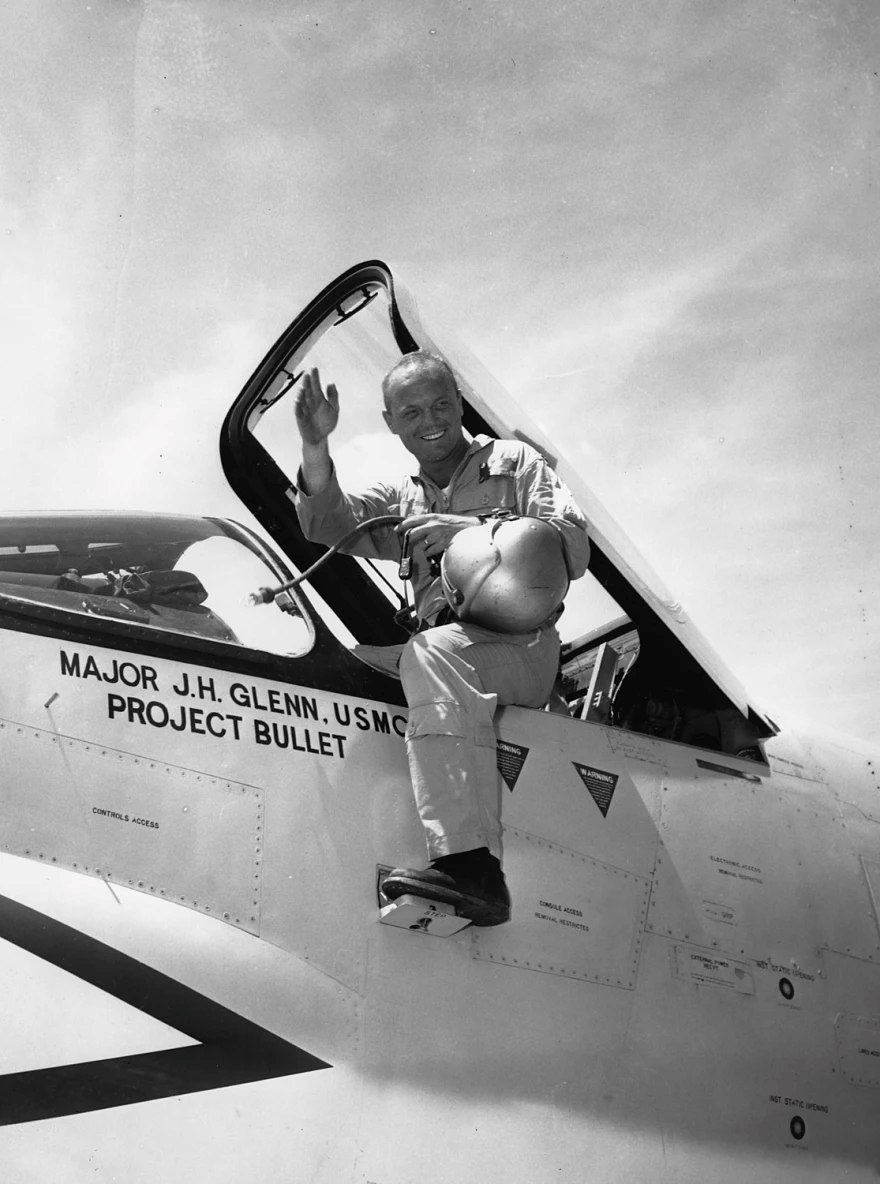
The museum is also making headway in its archival department, with volunteers and college interns cataloguing the museum’s inventory of uniforms, flying helmets, books, and documents to be accessible for future researchers when the museum opens. The museum has been further aided in this by California State University, Fullerton, where the Lawrence de Graaf Center for Oral and Public History (COPH) recorded hundreds of oral accounts of local Marine Corps veterans who once served at MCAS El Toro through the El Toro Marine Corps Air Station Project, and has now delivered copies and transcripts of these accounts to the Flying Leatherneck Aviation Museum, not only to be part of their own archival collections, but to provide an opportunity for the public to access these accounts in the museum’s interactive exhibits. The museum has also been working with University of California, Irvine to provide opportunities for the students of their history department to contribute to the behind-the-scenes efforts to build up the new museum.

In all, the new Flying Leatherneck Aviation Museum promises to be a museum that not only honors the ongoing legacy of the men and women of the aviation branch of the US Marines but will also be a world class museum with a civic outlook on the new community being constructed on the old site of MCAS El Toro. The Flying Leatherneck Aviation Museum currently estimates that they will have the new museum open to the public around fall 2026 or spring 2027, and we at Vintage Aviation News look forward to providing future updates on the museum’s journey! For more information, visit the museum’s website HERE.




